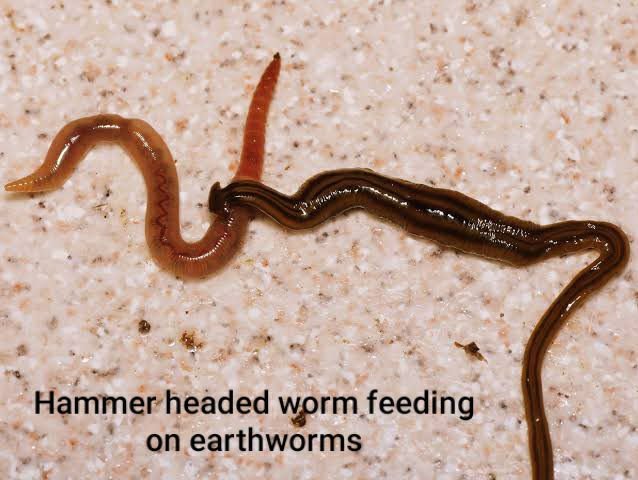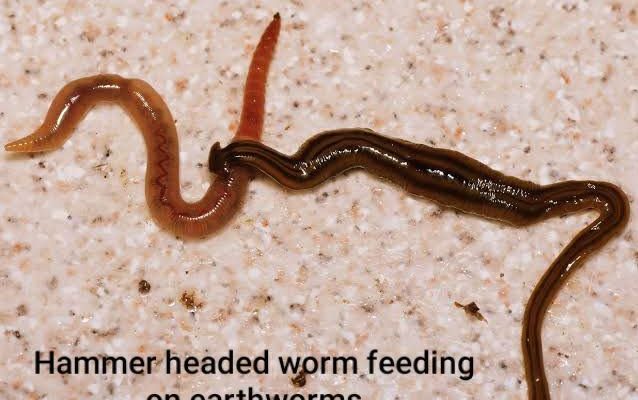
Hammerhead worms, with their distinctive flattened, hammer-like heads, are not your average garden variety. Instead, they’re voracious predators, and they’re becoming a serious threat to earthworms that play a vital role in our soil health. So, why should we care? Well, without healthy earthworm populations, our soil struggles, affecting plant growth and, ultimately, our food supply. Let’s dig deeper into how these hammerhead worms operate in the shadows of our gardens and what their presence means for earthworms and our environment as a whole.
What Are Hammerhead Worms?
To understand the impact of hammerhead worms, we first need to know what they are. These worms, scientifically known as *Bipalium spp.*, belong to a class called Turbellaria. They’re typically found in tropical and subtropical regions but have been spotted as far north as the U.S. due to global warming and human activities.
Hammerhead worms can vary in size from just a few inches to over a foot long! What sets them apart is their unique head shape, resembling a flattened hammer. This design isn’t just for show; it helps them hunt by allowing them to detect vibrations in the soil, signaling the presence of prey. Picture them as the silent hunters of the worm world, quietly slinking around in search of their next meal.
Why Are Earthworms Important?
Before we dive into how hammerhead worms affect earthworm populations, let’s take a moment to appreciate the earthworm. These wriggly little creatures are soil superheroes. They aerate the soil, improve drainage, and break down organic matter, turning it into nutrient-rich humus. This process is crucial for plant health and ultimately impacts everything from our gardens to large-scale agriculture.
Earthworms also play a significant role in the ecosystem by creating tunnels in the soil, which not only helps with water absorption but also allows air to circulate. Without them, the soil becomes compacted, leading to poor plant growth and reduced crop yields. The loss of earthworms can create a domino effect that impacts the entire food chain.
How Do Hammerhead Worms Impact Earthworm Populations?
Now, let’s get to the heart of the matter: how do hammerhead worms affect earthworms? The answer is quite troubling. Hammerhead worms are not just competition; they actively prey on earthworms. They use a method called *invasive predation*, where they surround and engulf their prey, often consuming them whole.
The presence of hammerhead worms can lead to a significant decline in earthworm populations. Studies indicate that in areas heavily infested with these predators, earthworm numbers can plummet by over 50%. Imagine a once-thriving city suddenly losing half its population; that’s what’s happening in our soil.
The Mechanism of Predation
You might be wondering: how do hammerhead worms catch their prey so effectively? Well, these predators have a unique adaptation. They secrete a type of enzyme that breaks down the tissues of earthworms, making it easier to digest them.
Here’s how the process generally works:
- Detection: Hammerhead worms sense vibrations in the soil, which often indicates the movement of earthworms.
- Ambush: Once they identify a target, they move in quickly, using their hammer-shaped head to pin the earthworm down.
- Consumption: After immobilizing the earthworm, they release digestive enzymes to break down the prey before consuming it.
This hunting strategy is highly effective, but it creates a troubling scenario for earthworms. As hammerhead populations grow, earthworm numbers decrease, impacting the entire soil ecosystem.
The Spread of Hammerhead Worms
So, how are hammerhead worms spreading? Unfortunately, they’ve hitched a ride on plants, soil, and even gardening equipment as humans move materials from one place to another. This unintentional transport allows them to invade new regions, often overwhelming local earthworm populations that haven’t evolved defenses against these predators.
Hammerhead worms are also resilient. They can adapt to various environmental conditions, which makes them difficult to control once they establish themselves in a new area. Homeowners and gardeners are often caught off guard by their sudden appearance, unaware of the potential damage they can cause to our valuable earthworm friends.
What Can Be Done About Hammerhead Worms?
Addressing the hammerhead worm problem isn’t straightforward, but there are steps you can take. First, if you spot one in your garden, avoid disturbing it. Instead, consider removing it by hand and placing it in a sealed bag to prevent further spread.
Here are a few strategies to consider:
- Remove Manually: If you see them in your garden, carefully pick them out and dispose of them.
- Keep Soil Healthy: Healthy soils can support diverse ecosystems, which can help mitigate the impact of hammerhead worms.
- Avoid Overwatering: This can create an environment that’s more favorable for hammerhead worms.
While these methods won’t eliminate the problem entirely, they can help manage hammerhead worm populations and protect your valuable earthworms.
In the grand scheme of nature, every species has its role, but some can become problematic, like hammerhead worms. Their predation on earthworms poses a serious threat to soil health, plant growth, and the ecosystems we rely on. Understanding this relationship is crucial for gardeners and anyone interested in maintaining healthy soil.
By becoming aware of hammerhead worms and how they affect earthworm populations, we can take steps to minimize their impact. It’s all about finding that balance in nature—one where both hammerhead worms and earthworms can coexist without tipping the scales too far. After all, the health of our soils is vital for the food we grow and the environment we cherish. So, let’s keep our eyes on the ground and protect these essential creatures for future generations.

